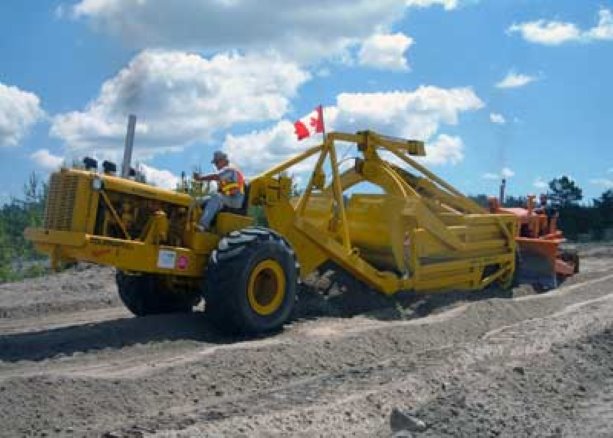If there is an old, broken down, rusting piece of vintage heavy equipment cluttering up your yard, don’t drag to the scrap dealer. Give Frank Rooney a call.
Historical Construction Equipment Association
If there is an old, broken down, rusting piece of vintage heavy equipment cluttering up your yard, don’t drag to the scrap dealer. Give Frank Rooney a call.
To him, and his friends at the Historical Construction Equipment Association, there is life in those worn out graders, cranes, trucks and bulldozers.
HCEA of Canada was founded in 1996 to locate, preserve and restore the construction equipment that helped to build Canada from Confederation onward. It’s a team effort carried out by 230 members across Canada. A chapter of the US HCEA, membership comes primarily from the heavy construction industry, but includes high school teachers and accountants interested in the big machines. The Simcoe County Museum in Minesing, ON has teamed up with the association to put the old equipment on display.
“We currently have approximately 16 exhibits restored,” says association President, Frank Rooney. “Everything from a 1923 Erie Steam Shovel, to a 1917 Buckeye wheel trencher, probably the oldest operating piece of construction equipment in the country.” Its engine was rehabilitated last year, with some replacement parts built from scratch.
“The mechanism is whirling about and next year we’ll have it full restored and in display condition,” says Rooney.
The Erie Steam Shovel is currently in the process of having its wooden cab refurbished. But what does an original wooden steam shovel cab look like?
“Our older members have very extensive experience with equipment they’ve worked on in the early stages of their careers,” say Rooney. “A lot of these pieces were in operation for as many as 50 years so there’s definite crossover.” The association also maintains an extensive database of historical photos and maintenance manuals.
In some cases, suppliers share their “new old” parts with the group, particularly when stock is being culled. In other cases, parts are supplied by members who have inside knowledge of where they might be located.
“If we really need a part, sometimes it will just end up on our workbench,” says Rooney with a chuckle.
“We’re in the process of restoring a 1937 Northwest crane and we needed to replace a broken part. Within 10 days we had the part and I asked the person who supplied it, ‘Where’d you find it?’ He told me cryptically that he located it ‘on a long road that doesn’t have a turn on it.’”
While much of the historical equipment found in Canada is of U.S. origin, HCEA is interested in the history of Canadian equipment companies as well. It maintains a 1927 dump truck made by FWD in Kitchener (the FWD stood for four wheel drive) and was used by the Toronto Public Works Department. American-based Champion produced road grading equipment in Goderich, ON, while Dominion Engineering manufactured cranes in Montreal. The association is working on a definitive history of Canadian construction equipment manufacturers.
“I don’t think the equipment they’re making today will be on display in 100 years,” notes Rooney. “I embrace changes in technology, but because current equipment is designed for a specific purpose over a shorter lifespan, the equipment won’t be around for 25 or 30 years so that it can be considered historical.”
The price of scrap metal also impacts on the number of pieces HCEA acquires, but they are still choosy about what they’ll take.
“It has to be a significant model and it has to be ‘doable’ for us to restore,” Rooney explains.
The association restores equipment at its own expense combined with donations and some corporate support. HCEA recently launched a sponsorship model, restoring a vehicle on behalf of a company which can then be used for public relations purposes.
One of the HCEA’s current challenges is finding people to operate the older machines. “We’re encouraging our younger members to learn from our older members and become steam-certified,” says Rooney. “When that knowledge is gone, it’s gone.”

This 1946 LeTourneau ‘Super C’ Tournapull scraper was located in Ohio.











Recent Comments
comments for this post are closed